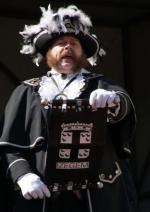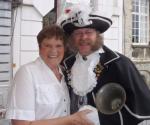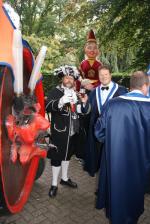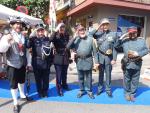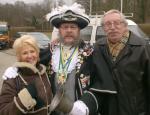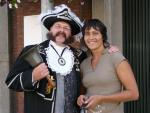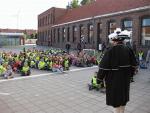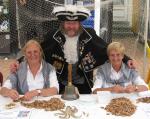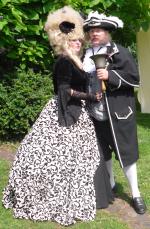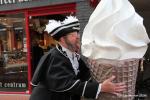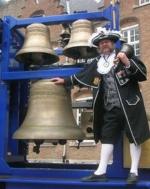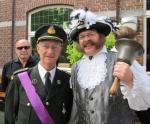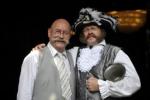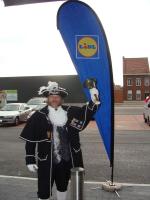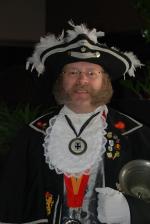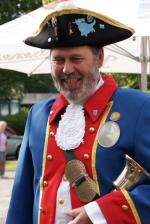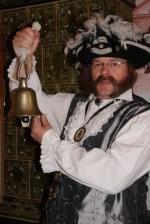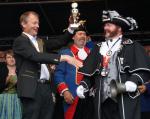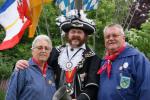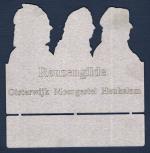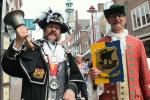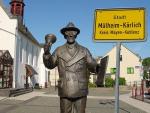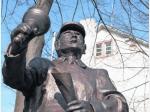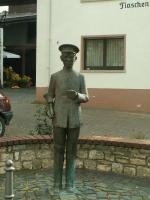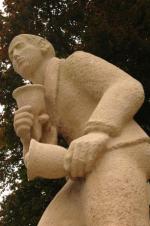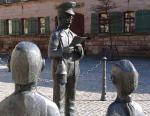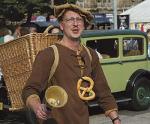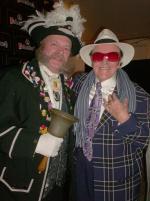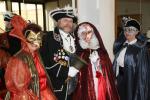Town Crier Bell.

 ells have been an important part of society for hundreds of years, signifying public meetings, calls of alarm, and peels of celebration. Consequently, bell foundries have also had a significant historical role to play. The Whitechapel Bell Foundry, probably one of the oldest, shares a large part of this history. Its trademark stamp of three bells can be found pressed into the iron of bells dating back over 400 years. The foundry's history can be dated back even further, with Robert Mot, who was a Master Founder for Whitechapel in 1570, tracing his lineage back to founders working in the London area since 1420. It was in the age old foundry of Whitechapel that many of today's world famous bells were born.
Before making it's trip to the United States, and it's final resting place in Philadelphia, the liberty bell was cast by Whitechapel in 1752 (the crack originated through mishandling, rather than poor craftsmanship). A little over a hundred years later another famous bell, the 13 ½ ton "Big Ben" was cast at Whitechapel in before being placed atop the tower at the Palace of Westminster in 1858. Bells which have been commissioned by the British governments, as well as countless other nations around the world, have all originated in the foundry near London. ells have been an important part of society for hundreds of years, signifying public meetings, calls of alarm, and peels of celebration. Consequently, bell foundries have also had a significant historical role to play. The Whitechapel Bell Foundry, probably one of the oldest, shares a large part of this history. Its trademark stamp of three bells can be found pressed into the iron of bells dating back over 400 years. The foundry's history can be dated back even further, with Robert Mot, who was a Master Founder for Whitechapel in 1570, tracing his lineage back to founders working in the London area since 1420. It was in the age old foundry of Whitechapel that many of today's world famous bells were born.
Before making it's trip to the United States, and it's final resting place in Philadelphia, the liberty bell was cast by Whitechapel in 1752 (the crack originated through mishandling, rather than poor craftsmanship). A little over a hundred years later another famous bell, the 13 ½ ton "Big Ben" was cast at Whitechapel in before being placed atop the tower at the Palace of Westminster in 1858. Bells which have been commissioned by the British governments, as well as countless other nations around the world, have all originated in the foundry near London.
 hile many bell manufacturers have turned towards methods of mass production, Whitechapel continues to insist that there is no substitute for many of their traditional hand crafted techniques. hile many bell manufacturers have turned towards methods of mass production, Whitechapel continues to insist that there is no substitute for many of their traditional hand crafted techniques.
Town Crier Bell
The Hand Bell was traditionally used in Great Britain by town criers anxious to draw attention and spread the word, the hand bell was easily adapted by 19th century rural school teachers in the United States, in order to shepherd their charges back to the classroom. The 5-inch diameter bell features a smooth finished wooden handle.
|


